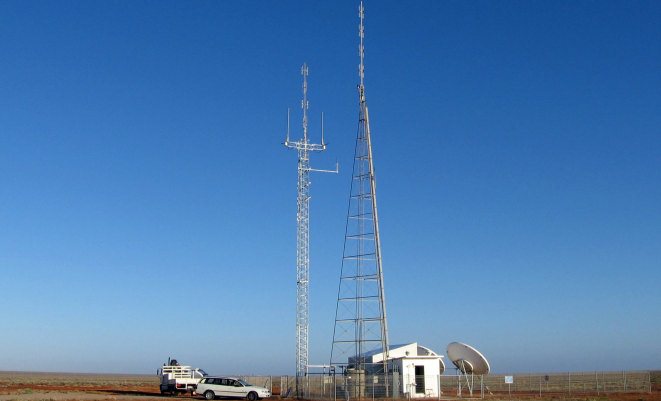There will be a cautious approach to any broadening of ADS-B (Automatic Dependent Surveillance Broadcast) mandates beyond 2017, Department of Infrastructure and Regional Development secretary Mike Mrdak says.
The current mandates require all flights operating under instrument flight rules (IFR) to have ADS-B, which is a satellite-based technology enabling aircraft to be accurately tracked by air traffic controllers and other pilots without the need for conventional radar, by February 2 2017.
While there is presently no requirement for flights operating under visual flight rules (VFR) to have ADS-B, Mrdak says expanding the mandate is something that will be looked at in 2016.
“We haven’t looked beyond IFR at this stage but our intention was to always post-2020 to have a program which would then start to expand,” Mrdak told delegates at the 2015 Safeskies conference in Canberra on Wednesday in response to a question.
“We will probably through the course of next year start to go back to government with our thinking on whether we expand the ADS-B mandate further. It will be a cautious approach. We do recognise … there is a significant cost for most of the industry in doing that.”
Civil Aviation Safety Authority (CASA) director of aviation safety Mark Skidmore also spoke favourably about one day extending the use of ADS-B to VFR flights.
“The aspect of ADS-B and all aircraft, I would encourage everyone to get ADS-B, it is a wonderful idea,” Skidmore said.
“ADS-B is the future. It is definitely going to give us a solution that allows us to see everyone across this great country of ours.”
“I really think that it is necessary but I have got to understand the impact on the community out there, particularly VFR operations and how we actually are going to implement that so I can’t say I am going to do it.”
Figures from Airservices presented at the conference showed 230 VFR aircraft were fitted with ADS-B at Septemebr 14 2015. (Airservices publishes stats updated weekly on ADS-B equippage here.)
Meanwhile, some 99.5 per cent of all commercial jet flights at FL290 and above were ADS-B equipped as of September 14, with turboprops at 94 per cent and business jets at 79 per cent.
Overall, 66 per cent of all IFR flights were currently fitted with ADS-B.
“It is actually progressing along at a rate which is consistent with where we are with the mandates,” Airservices acting chief executive Jason Harfield said.
Deputy Prime Minister and Minister for Infrastructure and Regional Development Warren Truss noted Australia’s ADS-B network of 74 ground stations was the “first in the world to achieve comprehensive continent wide ADS-B capability”.
“As ADS-B regulatory mandates draw near, CASA and Airservices will work closely with all industry sectors in the implementation of this important safety initiative,” Truss told the conference.
“Australia has become an early adopter of ADS-B given the significant benefits it brings to vast parts of the continent that for so long have had no surveillance coverage.”
There were plans to build 15 more ADS-B sites, which would provide blanket coverage down to 10,000ft, from 30,000ft currently.
Mrdak said the potential expansion of Class E airspace, which covers populated coastal areas, would also lend itself to a potential expansion of the ADS-B mandate.
“The availability of E airspace and what that gives us in terms of efficiency as well as improved safety outcomes is something we all want,” Mrdak said.
“I can certainly see post 2017 a significant expansion of E and I know that is something Mark and the OAR (Office of Airspace Regulation) are working on and over time that will mean that a number of VFR operators will need to equip more and more with ADS-B to get the benefits of access to the E airspace.”
Australian Business Aviation Association (ABAA) chief executive David Bell said his organisation supported the implementation of ADS-B.
“Very nearly all of the ABAA members’ aeroplanes are equipped. There is a few dragging the chain because of one manufacturer in America who has been very slow on the uptake there and I am hoping those remaining jets will be equipped in the next couple of months,” Bell told the conference.
“But I do think that parts of general aviation have a major problem with it, some of the training schools etc equipping their aircraft can be quite expensive as a percentage of the value of their aircraft.”
Bell said some of the non-ABAA members that were yet to equip their fleet with ADS-B technology were either flying older aircraft or had aircraft for sale.
Skidmore said industry was doing a good job of reducing the cost of fitting ADS-B.
“I’ve actually been demonstrated recently a kit that was 400 grams and very cheap,” Skidmore said.
“Industry is taking up the challenge and producing some great pieces of equipment.”

















Mat
says:IF there are even going to be any VFR General Aviation aircraft around in 2020. It seems there are more and more ‘hurdles’; not only being implemented for General Aviation aircraft but also for pilots
Mike Borgelt
says:Yes these people haven’t yet seen a hoop to jump through, a hurdle to jump over or a barrier to private and recreational aviation that they didn’t like.
On his half a million a year Skidmore wouldn’t even notice the cost of running his aircraft and keeping his licence.